Wynton Marsalis' "Abyssinian Mass" at the Kennedy Center
By Stephen Brookes • The Washington Post • October 7, 2013
By just about any standard, Wynton Marsalis’s “Abyssinian: A Gospel Celebration” is a huge work. Vast in scope and mighty in forces, it’s a journey through the history of African American music, weaving everything from New Orleans blues to hard-driving bop into a seamless whole. From a musical standpoint it’s a spectacular achievement, and the rafter-shaking, two-hour performance at the Kennedy Center Concert Hall on Sunday, presented by the Washington Performing Arts Society, was a must-hear event for any jazz lover.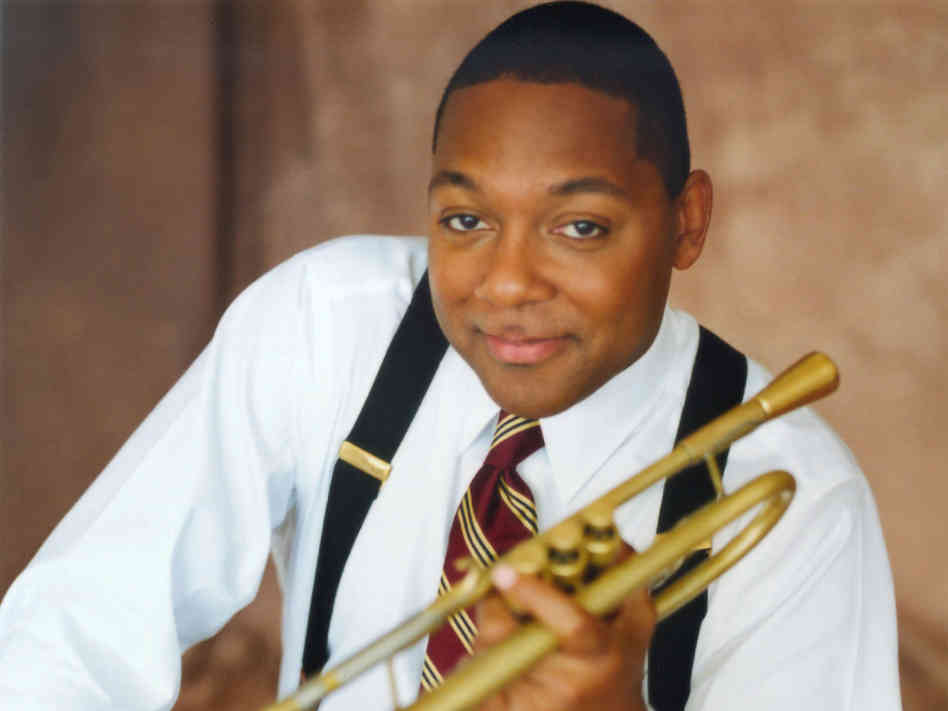 But the deeper power of “Abyssinian” may have been in the profound spirituality — and the sense of universal human connection — that seemed to run through it. Written in 2008 for Harlem’s Abyssinian Baptist Church, the work takes the loose form of a Mass, integrating sacred music (sung beautifully by the 70-member Chorale Le Chateau, under the baton of Damien Sneed) with the more secular playing of the 15-member Jazz at Lincoln Center Orchestra.
But the deeper power of “Abyssinian” may have been in the profound spirituality — and the sense of universal human connection — that seemed to run through it. Written in 2008 for Harlem’s Abyssinian Baptist Church, the work takes the loose form of a Mass, integrating sacred music (sung beautifully by the 70-member Chorale Le Chateau, under the baton of Damien Sneed) with the more secular playing of the 15-member Jazz at Lincoln Center Orchestra.
The result was something between a concert and a gospel service, a richly flavored musical epic that built to an almost ecstatic pitch. Ethereal hymns, foot-stomping blues, horns growling in Mingus-like ballads, rapturous gospel solos, a bit of free jazz, a hint of a New Orleans dirge — they all flowed together, unified by a kind of urgent, spiritual purpose. Never a mere pastiche, the freewheeling range of “Abyssinian” seemed aimed at a higher goal — and to judge by the roaring response of the audience, it achieved it.
Marsalis probably couldn’t hope for more committed performers of this work. Chorale members and instrumentalists both took frequent, virtuosic solos, and Marsalis himself played a central role throughout. But as if to underscore the universalist feeling of the work, he stayed well out of the spotlight, delivering the occasional perfectly wrought solo from his seat in the four-person trumpet section: just another member of the family of man.
New Music Ensemble at the National Gallery of Art
By Stephen Brookes • The Washington Post • September 30, 2013
Composer Steve Antosca likes to keep thing unpredictable. As the former director of the venerable Verge Ensemble and now as the head of the National Gallery of Art’s New Music Ensemble, he's brought wildly imaginative concerts — featuring everything from drum-playing robots to “echoic landscapes” created by motion-capturing devices — to Washington for more than a decade. That anything-goes spirit was alive and well Sunday night, when the New Music Ensemble mounted a high-tech — but often lyrical and gently beguiling — multimedia performance at the gallery’s East Building auditorium. Composer Steve AntoscaAntosca is particularly interested in the integration of computers with traditional instruments, and the evening opened with the premiere of his “my end is my beginning,” in which the playing of an acoustic ensemble (harpist Jacqueline Pollauf, saxophonist Noah Getz, pianist Laurie Hudicek and percussionist Ross Karre) is processed through computers (manned by William Brent), then broadcast through a battery of speakers around the hall. It took a few minutes for the complex textures to clarify, but the result was a shimmering, multilayered sea of sound, surging with power under a surface of delicate detail — a fascinating dance between the human players and their electronic ghosts.
Composer Steve AntoscaAntosca is particularly interested in the integration of computers with traditional instruments, and the evening opened with the premiere of his “my end is my beginning,” in which the playing of an acoustic ensemble (harpist Jacqueline Pollauf, saxophonist Noah Getz, pianist Laurie Hudicek and percussionist Ross Karre) is processed through computers (manned by William Brent), then broadcast through a battery of speakers around the hall. It took a few minutes for the complex textures to clarify, but the result was a shimmering, multilayered sea of sound, surging with power under a surface of delicate detail — a fascinating dance between the human players and their electronic ghosts.
Pollauf and Getz (who perform as the harp-saxophone duo Pictures on Silence) followed with a lighter but lovely piece, Andrew Earle Simpson’s “Summer-Night Songs.” A sort of pastoral nocturne, it’s full of detailed, coloristic effects that unfold as images of a summer sky flow by silently overhead, from dusk to starlight to a golden dawn. It’s atmospheric music, in every sense of the word, and a delight.
Not everything on the program worked quite as well. John Belkot’s deliberately open-ended “the woman with Renoir’s umbrella” seemed clumsy compared with the earlier works, and its accompanying black-and-white film (three versions of a boy-meets-girl story) had a sophomoric art-school feel. Miklós Maros’s “Rabescatura” (“Arabesque”) was a tour de force for solo saxophone. Getz gave it a polished performance, though the work was so clearly and solidly structured that you felt he could have loosened up a bit and injected a more spontaneous, improvisational feel.
The evening ended with a sort of musical joy ride — Fernando Benadon’s “Cotxes” (“Cars”), in which video of a drive to nowhere through the streets of Barcelona on a sunny morning is accompanied by a pleasantly flowing soundtrack, as if the radio were tuned to an upbeat “lite” modern station.
Mirage Trio at the Atlas
By Stephen Brookes • The Washington Post • September 23, 2013
The Atlas Performing Arts Center may be a step or two off the beaten track for most concertgoers, but it’s fast becoming a key destination for anyone interested in new American music. Under the direction of Armando Bayolo, the center’s New Music Series has brought some of the country’s most inventive young performers and composers to Washington, and it continued that noble mission on Sunday with the debut of a fine new trio named Mirage, in a program of 21st-century music notable for its striking lyricism, tenderness and warmth.
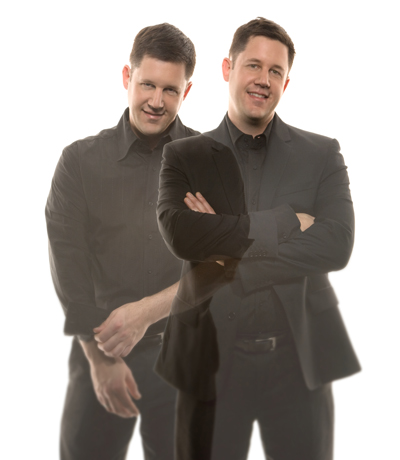 Nicholas Photinos of Mirage“We play music that we love, by composers we believe in,” said soprano Lindsay Kesselman as the concert opened, and that affection was audible throughout the afternoon. The music ranged from quietly poignant (Robert Honstein’s luminous “We Choose to Go to the Moon,” built around President John F. Kennedy’s famous words) to operatic (“How I Hate This Room” by Lee Kesselman, tracing a woman’s descent into madness) to the dreamlike “yes I said yes I will Yes” by Amy Beth Kirsten, a colorful setting of Molly Bloom’s remembered passion in the closing soliloquy of James Joyce’s “Ulysses.”
Nicholas Photinos of Mirage“We play music that we love, by composers we believe in,” said soprano Lindsay Kesselman as the concert opened, and that affection was audible throughout the afternoon. The music ranged from quietly poignant (Robert Honstein’s luminous “We Choose to Go to the Moon,” built around President John F. Kennedy’s famous words) to operatic (“How I Hate This Room” by Lee Kesselman, tracing a woman’s descent into madness) to the dreamlike “yes I said yes I will Yes” by Amy Beth Kirsten, a colorful setting of Molly Bloom’s remembered passion in the closing soliloquy of James Joyce’s “Ulysses.”
David Lang’s “Heroin,” for voice and cello, had a moving simplicity and directness, but not everything on the program worked quite as well. John Corigliano’s “Clothes Line” came off as an effete, through-the-lorgnette take on Bob Dylan’s lyrics, hardly an improvement on the gritty original. And Ruben Naeff’s lively “Fill the Present Day with Joy” began with an engaging idea — use lyrics taken from Facebook updates — but got a little too cutesy when the players started checking their cellphones during the performance.
The Mirage players — Nicholas Photinos on cello and Yasuko Oura on piano, as well as soprano Kesselman — played with virtuosity and conviction all afternoon, and those qualities were on full display in perhaps the most accomplished work on the program, Kaija Saariaho’s shimmering, otherworldly “Mirage” — a piece that inspired the group’s name. It’s a work of ravishing sonic beauty and imagination, rich in both complexity and poetry, and the trio gave it a vivid and completely assured reading — a memorable performance in every way.
Fairfax Symphony Orchestra at George Mason Center for the Arts
By Stephen Brookes • The Washington Post • September 22, 2013
Do you need a huge orchestra to make huge music? The answer — to judge by the Fairfax Symphony Orchestra’s larger-than-life performance at George Mason University on Saturday night — is an emphatic no. Under the baton of music director Christopher Zimmerman, this orchestra has been punching well above its weight for several years now, and its season-opening concert — which paired two of Aaron Copland’s colorful “American” works with the pulse-racing fury of Beethoven’s Seventh Symphony — proved to be an evening of such visceral, spectacular music-making that it won a standing ovation from the packed house.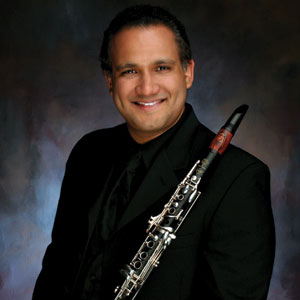 Ricardo MoralesThe program opened with a light touch: a rarely heard work of Copland’s, written when the composer, still in his 20s, was living in Paris and developing the distinctly “American” style he became known for. His “Music for the Theatre” cheerfully mixes jazz with modernism and ranges from an ethereal lento to a growling burlesque straight out of a strip club. It’s a fascinating if not quite mature work — “American” music with a French accent — but great fun, with plenty of solos that gave the wind and brass players room to strut their jazzy sides.
Ricardo MoralesThe program opened with a light touch: a rarely heard work of Copland’s, written when the composer, still in his 20s, was living in Paris and developing the distinctly “American” style he became known for. His “Music for the Theatre” cheerfully mixes jazz with modernism and ranges from an ethereal lento to a growling burlesque straight out of a strip club. It’s a fascinating if not quite mature work — “American” music with a French accent — but great fun, with plenty of solos that gave the wind and brass players room to strut their jazzy sides.
But the evening moved to a deeper level with Copland’s later Clarinet Concerto, in a masterful and evocative performance by clarinetist Ricardo Morales. More subtle and inward-looking than the earlier work, the concerto opens quietly, with a luminous sense of awakening, before the clarinet takes wing in a virtuosic cadenza and soars into the playful, quick-witted second movement. Morales played it with elegance and impeccable style, and he followed it up with the charming “Calypso Serenade” (from Morton Gould’s “Benny’s Gig” suite) as an encore.
It was in the final half of the program, though, that the Fairfax players really came into their own. There are few works of art — maybe few human accomplishments at all — that equal the power and almost overwhelming beauty of Beethoven’s Seventh Symphony, which builds a few simple gestures into a vast musical juggernaut. It’s an extremely difficult work to bring off, but Zimmerman used his relatively small orchestra to brilliant advantage, in a performance that revealed every detail of the music while exploding with a sense of immense scope and vast, unstoppable power.
Verge Ensemble at the Museum of American Art
By Stephen Brookes • The Washington Post • September 9, 2013
The Verge Ensemble is among the most thoughtful of Washington’s contemporary chamber music groups, and its program at the Smithsonian American Art Museum on Sunday afternoon was built on a fine premise: to explore the roots that much contemporary “serious” music has in folk, pop and even primitive music. It made for an intriguing if often low-key afternoon, a bit academic in tone (as Verge can sometimes be) but with some real gems — including a luminous account of John Cage’s “In a Landscape” and Russell Platt’s lyrical “Memoir” from 2010.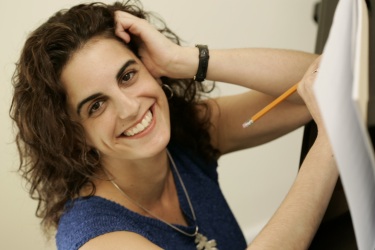 Composer Stacy GarropThe concert (part of the museum’s excellent Steinway Series) opened with a gentle homage to the past: the beguiling “To A Wild Rose,” a 1896 work by the American romantic composer Edward MacDowell. Pianist Laurie Hudicek (a newcomer to Verge) turned in a fine if rather distant reading and was joined by flutist David Whiteside for the elegiac “In Memoriam WBW” by Elliott Schwartz, written for Whiteside’s late father. Schwartz’s music, to these ears, can sound airless and a bit pedantic, as if written in musical academese. But “Memoriam” was an evocative and quite lovely work, played by Whiteside with quiet affection.
Composer Stacy GarropThe concert (part of the museum’s excellent Steinway Series) opened with a gentle homage to the past: the beguiling “To A Wild Rose,” a 1896 work by the American romantic composer Edward MacDowell. Pianist Laurie Hudicek (a newcomer to Verge) turned in a fine if rather distant reading and was joined by flutist David Whiteside for the elegiac “In Memoriam WBW” by Elliott Schwartz, written for Whiteside’s late father. Schwartz’s music, to these ears, can sound airless and a bit pedantic, as if written in musical academese. But “Memoriam” was an evocative and quite lovely work, played by Whiteside with quiet affection.
Aaron Copland’s “Four Piano Blues” are great fun, balanced between sophistication and a kind of gentle biting wit, and Hudicek gave them a natural, straightforward reading — more cool light than burning fire. Gabriela Lena Frank’s “Four Pre-Inca Sketches” for flute and cello were colorful works built from wisps of sound and breath, and despite their often incantatory and primitive feel, the performance seemed, well, wispy and evaporated in the ears without much of a punch.
The afternoon clicked into gear when violinist Lina Bahn joined Hudicek and cellist Tobias Werner for Stacy Garrop’s “Silver Dagger” — a gorgeous and eloquent reworking of the old Appalachian folk song. Full of dark passions and slow-burning sensuality, it’s an irresistible work, and Bahn led the trio in a quietly ferocious, utterly convincing account.
The same players closed the afternoon with perhaps the most exuberant performance of the concert: Paul Schoenfield’s eclectic, uninhibited and completely delightful “Café Music.”
“Dreaming of the Phoenix” at the Sackler Gallery
By Stephen Brookes • The Washington Post • August 19, 2013
It’s been a good summer for anyone even remotely interested in Chinese music, with nearly a dozen performances of both traditional and contemporary works at the Smithsonian’s Sackler Gallery. The miniseries, built around the theme of the mythological phoenix, ended this weekend with four performances of the rarely heard musical poetry theater known as kunqu, and its high point may have come on Sunday with “Dreaming of the Phoenix” — a work by the young composer Du Yun that bridged thousand-year-old traditions and modern sensibilities with deft, perceptive grace.
Kunqu is the oldest surviving form of Chinese opera, and “Dreaming” — the first part of a longer work called “Moonlight Meditation” — opened with a spare and almost ancient sense of ritual, the six white-clad musicians entering the stage one by one to a haunting melody on a bamboo flute. Composer Du YunIn fact, the entire piece felt steeped in ritual, as if to evoke a long-vanished world. Du Yun’s delicate and ethereal score — for singer, flutes, percussion, pipa, zither and MacBook Pro — was unmistakably rooted in traditional Chinese music, and its lyrics were drawn from poetry hundreds, or even thousands, of years old. But this wasn’t just an exercise in nostalgia. As it evoked woodland spirits, soaring phoenixes, distant battlegrounds and delicate images of nature, the work seemed to come alive with the shimmering mystery of a half-remembered dream — a reverie of the past, in a thoroughly modern mind.
Composer Du YunIn fact, the entire piece felt steeped in ritual, as if to evoke a long-vanished world. Du Yun’s delicate and ethereal score — for singer, flutes, percussion, pipa, zither and MacBook Pro — was unmistakably rooted in traditional Chinese music, and its lyrics were drawn from poetry hundreds, or even thousands, of years old. But this wasn’t just an exercise in nostalgia. As it evoked woodland spirits, soaring phoenixes, distant battlegrounds and delicate images of nature, the work seemed to come alive with the shimmering mystery of a half-remembered dream — a reverie of the past, in a thoroughly modern mind.
Much of the work’s impact came from its superb, virtuosic performance. Singer Qian Yi — who also wrote the story line — danced and sang with quiet eloquence at the center of the ensemble, while the composer herself manned the MacBook’s more contemporary sonics. Chen Tao turned in impeccable playing on both transverse and end-blown wooden flutes, but perhaps the finest playing came from Zhou Yi, whose solo on the pipa provided the most breathtaking moments of the afternoon.
Chicago lawyer’s second act: Playing piano on the concert stage
By Stephen Brookes • The Washington Post • August 14, 2013
Okay, so . . . maybe you didn’t turn out to be the next Vladimir Horowitz.
Sure, you loved the piano and you practiced like a demon all through college. You could churn out a mean Beethoven sonata and you even gave a recital or three. But you never quite made it to Carnegie Hall, and in your 20s you had to admit you just weren’t headed for the glamorous life of a globe-trotting pianist, dazzling audiences from Paris to New York. So, like most of us, you heaved a sigh, got a grown-up job, and packed up those dreams forever.
Unless, of course, you happen to be Mark Damisch.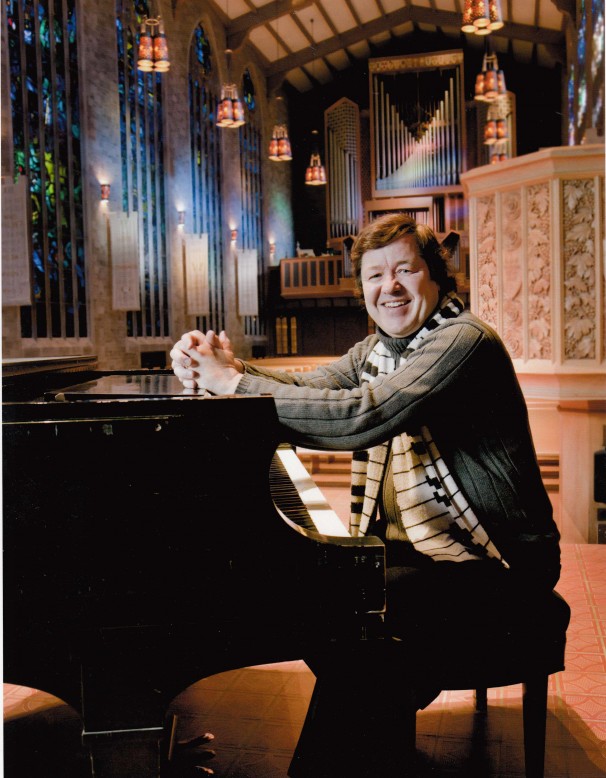 A settled, successful Chicago lawyer and family man, Damisch hadn’t even touched a keyboard in nearly 20 years when he decided, at the ripe age of 43, that it might be kind of cool to shake out his fingers, squeeze into a tuxedo, and set out on the international piano circuit — just like that, and completely on his own.
A settled, successful Chicago lawyer and family man, Damisch hadn’t even touched a keyboard in nearly 20 years when he decided, at the ripe age of 43, that it might be kind of cool to shake out his fingers, squeeze into a tuxedo, and set out on the international piano circuit — just like that, and completely on his own.
Crazy? Maybe. It’s hard to find a more brutally competitive profession than classical music, and making it as a soloist takes not just brilliance, endless work and hard-driving professionalism, but also a very thick skin. There’s barely enough room for the geniuses, let alone middle-aged do-it-yourselfers. But since the summer Damisch decided to elbow his way onto that elite stage, he’s given close to a thousand recitals around the world, won admiring reviews, and raised over a million dollars for charity.
Oh — and he’s done all this in his spare time. He has a law firm to run, after all.
“I’m a little like Forrest Gump,” says Damisch, now 57, who will be in town Monday night to launch his latest tour with a concert at the Russian Cultural Centre. “I’m not too smart — but I keep showing up.”
Damisch’s “just do it” approach to music should perhaps not be a surprise. This is a guy, after all, who announced at his first piano lesson— at age 7 — that he wanted to learn Beethoven’s “Emperor” concerto. He studied piano through high school and college (though he never majored in music), and by his late teens was building a career as a performer.
“Like everybody else, I started at the bottom,” he says. “I played at senior centers, churches, pretty much any place that would take me.” By his early 20s he was on his first world tour, and seemed committed to a life in music. But terrible bouts of stage fright — as well as the harsh realities of the classical world — made him reconsider.
“Music is a very unforgiving profession,” he says. “You get to the top of your game, you have an off night, the next thing you know you’ve got a bad review and your career is in tatters.”
So at 25 he did the sensible thing. He quit the piano, got a law degree from Northwestern, became a public prosecutor, started a family, was elected mayor of the Village of Northbrook, and eventually opened his own law firm.
But when 2000 rolled around, he decided to try “something cool” to mark the new millennium. So he set up a dozen concerts for himself — and discovered, he says, his “niche.” He organized another international tour the next year, and the next, and now plays 70 to 80 concerts a year. Accompanied on voice and piano by his daughters Katherine, 23, and Alexandra, 18, he’s been around the planet about 16 times, playing everywhere from Hanoi to Hiroshima to St. Petersburg — where they’ll be performing an ambitious program of Prokofiev, Copland and Grieg next month.
But what’s perhaps most remarkable is that virtually all Damisch’s concerts have been for charity. He and his daughters have raised hundreds of thousands of dollars to fight human trafficking, help blind children in Africa, support breast cancer research, grant end-of-life wishes, aid victims of the 2011 Japanese tsunami, and even get the Elgin Marbles returned to Greece. After their recital here Monday, they’ll be flying to Scandinavia and Russia for a month-long tour of concerts benefiting, among others, the homeless in Copenhagen and orphans in St. Petersburg.
And when he’s not playing for a cause, Damisch says, he mounts free concerts to “reach across the divide” that separates cultures.
“I grew up during the Vietnam War,” he says, “and had a lot of negative feelings about that country. But when I went there to play, the concert was completely sold out, jammed with young people. And at the end of the program we sang ‘All You Need Is Love’ with the audience, and everybody there knew the words and sang along. The feeling in the hall was electrifying. That’s a long way from the Vietnam War.”
But before you dust off that old piano, quit your job, and reinvent yourself as a freelance cultural ambassador, be aware that the DIY concert life “isn’t all roses and balloons,” Damisch cautions.
“I set all the concerts up myself,” he says. “I’m my own agent. I decide where I want to go, pick the dates out, and start scouring the venues in a particular location. Then I ask the venue if they’d be willing to donate it, particularly if it’s for a charity event, and then I’ll either find the charity myself or I’ll find a promoter.”
And he pays all his own expenses as well, from hotels to airfare; any proceeds from the concerts go to the charities. And between practicing, studying, and arranging the complex logistics of each tour, it’s essentially a second full-time job.
“The law practice is there to pay the bills,” he says. “But I have to be at the piano pretty much every night.”

